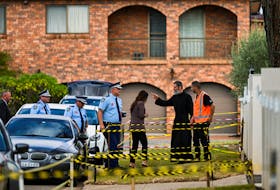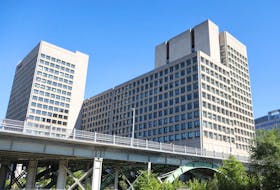ST. LAWRENCE, NL – The drive from the tip of the Burin Peninsula to the Trans-Canada Highway intersection at Goobies could be much safer.
At the Jan. 16 meeting of the St. Lawrence Town Council, Mayor Paul Pike said lack of highway cameras, and cell phone service, add to the danger of driving the Burin Peninsula, especially during the winter.
“For people that have to travel during the winter, it is somewhat of a challenge to get on that highway, especially if you have an early morning appointment or you’re trying to get in out of sheer desperation to see a doctor,” Pike told council.
“We have emergency vehicles that need to be on that highway, so I think it’s time the Town of St. Lawrence took a stand on that, and we make some noise.”
According to the Department of Transportation and Works’ website, road maintenance crews throughout the province report for work between 4:30 and 6 a.m., five days a week. They work until mid-afternoon unless weather conditions require them to work additional hours.
"Why would you set up in a place like the Burin Peninsula if it’s not safe to travel on the roads in the winter time?" - St. Lawrence Mayor Paul Pike
During storms, plowing continues until 9:30 p.m. or longer until all roads are open to traffic. Crews generally do not work between 10 p.m. and 4:30 a.m., unless in emergency situations.
Pike said if a major snowfall hits between the time equipment comes off the roads and the next scheduled shift, road conditions are unsafe for people who need to travel during that period.
“It’s just not suitable,” he said. “It’s not safe and we shouldn’t have to live like that, in fear of having to go on the road.”
Pike said these conditions are detrimental to attracting people to live or establish businesses in the area.
“Why would you set up in a place like the Burin Peninsula if it’s not safe to travel on the roads in the wintertime?”
Cell service dead zones add to danger
Adding to the potential danger is lack of cell phone coverage in some areas of the peninsula.
From the area from Swift Current to Terrenceville — a distance of about 75 km — there is no cell phone service.
Mayor Pike says in December he and his son left St. St. Lawrence, in separate vehicles, to travel to St. John’s.
Conditions were fine when they left Marystown, but then Pike hit a snowstorm and got caught in a line of traffic.
“I couldn’t turn around and I couldn’t call (my son) to tell him to stop and go back home because I had no cell coverage.
“It’s very dangerous without having communication.”
Pike is not the only one who has raised the issue of the need for improved cell phone coverage on the highway.
Members of the Burin Peninsula Joint Council, as well as businesses and organizations in the area, also see the need for coverage.
Council chair Everett Farwell said with the recent announcement of improved broadband service to communities, he hopes to hear a similar announcement on cell phone coverage for the region.
“Efforts have been on-going for more than a decade in our region between Bell Aliant and individuals, groups and organizations for improved cell phone coverage,” he told The Southern Gazette.
“Although we have seen upgrades and improvements, far too many areas on Route 210 … (still) have no cell phone coverage.”
Wilf Emberley, a truck driver from Marystown, said lack of communication is always on his mind as he travels the highway.
“If something bad were to happen in a no-service area, a bad situation could be worse,” he said.
Pike added that from Goobies to Marystown there are no highway cameras.
Pike said having those live cameras along the Burin Peninsula would enable travelers to make better decisions about whether or not they should travel the highway.
Highway cameras do, however, require cell phone service to operate.
“If you even had two (cameras) to get you to as far as Swift Current, you’d be able to make more-informed decisions,” Pike said.
A representative of the department informed the Gazette on Friday afternoon that a highway cam was being added near Terrenceville, in the Dunne’s Hill area, within the next few weeks.








